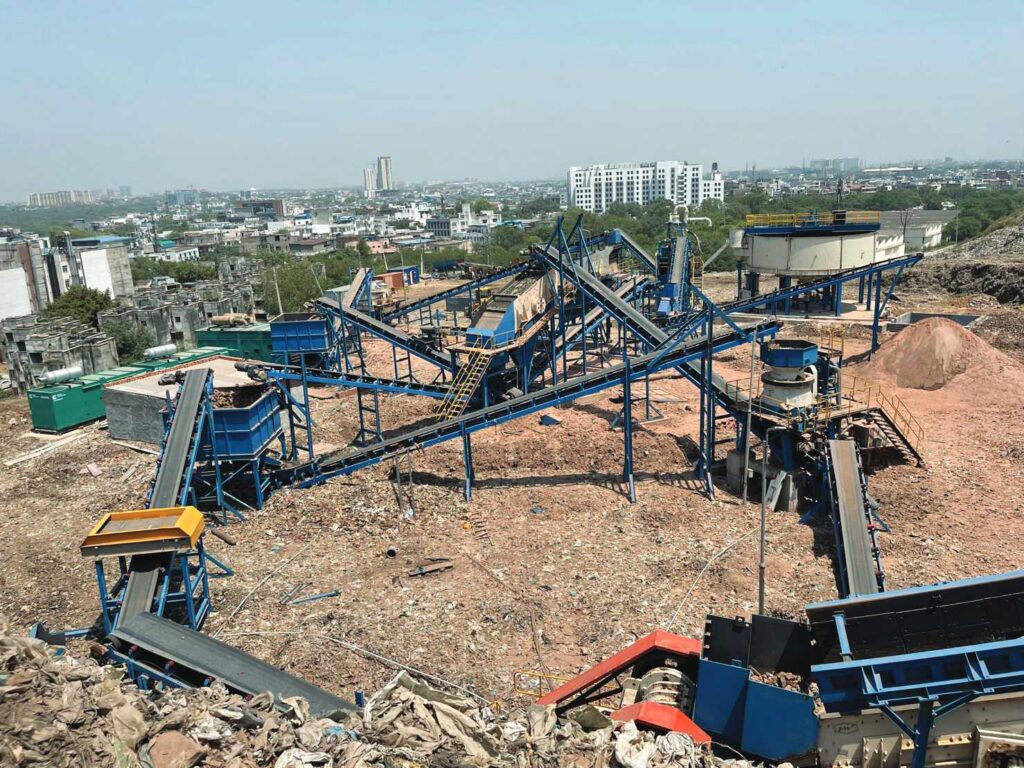

Waste management companies are leveraging innovative technologies to convert waste into valuable resources, such as energy, compost, and raw materials for manufacturing. Ramakant Burman-CEO & MD of GreenTech Environ Management Pvt. Ltd shares his insights about waste recycling at an industrial scale with Clean India Journal.
The three major landfill sites in Delhi include Okhla, Bhalaswa, and Ghazipur. Earlier, biomining was carried out by the government using trommel screen machines for waste management and recycling facilities. It separates different types of waste materials, including plastics, paper, glass and metals.
A gross mismatch to the tune of a few 1000 metric tonnes in the incoming waste quantities from the three dumpsites and the volume getting processed using the trommel machines, prompted the government to adopt disruptive technology to fill in the deficit.
Domestic hazardous waste like sanitary napkins, infant & adult diapers, and contraceptives, baffle people when it comes to disposal as there is always confusion on effective segregation.
Ramakant Burman
At this juncture, GreenTech was awarded a tender for the biomining of waste to the tune of 45L metric tonnes at the Okhla area. Around 24L metric tonnes of waste has been cleared so far using superior quality machines imported from Germany and the United Kingdom. These machines are advantageous as they are mobile compared to the traditional trommel machines. Their output is praiseworthy, on an average 7,000-8,000 metric tonnes of waste is processed daily.



About 70-80% of total output fraction includes inert material which is used for the construction of national highways. The C&D waste is processed to give various fractions and these combined with recycled aggregates give a mixture of bricks and stones to be used in non-structural construction like the pillar of a bridge. RDF, an alternate fuel source, is provided to cement plants and other waste to energy plants.
Speaking of another instance, Ramakant explains that “the leachate released by some star hotels in Kolkata, enter and pollute groundwater nearby, causing arsenic poisoning in people residing within a 5km radius, who are consuming the water for routine tasks. An old landfill in the same city emits methane gas when wet waste is diverted to its already filled space. When heat is combined with methane, the release of dioxygen fluoride occurs and this causes cancer. Alongside burning of plastic and shoes, biomedical waste management has to warrant attention as cancer centres are running to full capacity across the country.
“Domestic hazardous waste like sanitary napkins, infant & adult diapers, and contraceptives, baffle people when it comes to disposal as there is always confusion on effective segregation. This conundrum extends to hotels as well. All concerned people should be provided with a separate bin to dispose of such waste which can be appropriately handled in a manner like biomedical waste management. Animal carcasses should be efficiently disposed of at a crematorium instead of being dumped in a landfill.”
Collaborations between public and private sectors are pivotal in scaling initiatives, creating a lucrative market for businesses involved in waste management solutions.
As India strives to achieve its sustainability goals, the waste recycling sector offers opportunities for growth and innovation, leaning towards a clean and sustainable future.
 CIJConnect Bot-enabled WhatsApp
CIJConnect Bot-enabled WhatsApp









